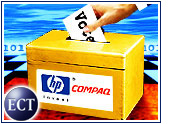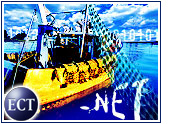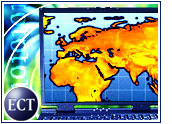
Adobe Systems (Nasdaq: ADBE), Bank of America (NYSE: BAC) and Palm (Nasdaq: PALM) are just some of the companies that have turned to Carat-owned CaratInteractive to plan their online and interactivemarketing campaigns.
Founded in August 2000, Carat Interactive specializesin digital messaging programs that are integrated bothoffline and online across interactive media,including the Internet, wireless devices andinteractive television.
In January 2002, the Boston, Massachusetts-based firm acquiredemerging technologies guru Lot21 and CRM providerVizium. Carat Interactive vice president and mediadirector Mark Stephens — a 19-year advertising veteran– called the new trio a “marriage made in heaven.”
Stephens, formerly of Lot21, recently spoke with theE-Commerce Times about the untapped potential ofinteractive advertising and the future of integratedmarketing.
Interaction Plan
ECT: What advertising advantages does the Internetoffer that other media do not provide?
Stephens: The first is that it is very focused. Mostother media, with the exception of print, are not aconsumer’s core focus. Radio and television are in thebackground. Internet advertising is difficult to miss.
Another advantage is the ability to interact withconsumers. That is something no other medium has. Ifthey are ready to purchase something, they can dothat. If they want to gather more information, theycan go through that process. It allows them to becomeaware of a product, to go through an evaluation phaseand to buy the product. No other medium allows them todo all of this.
ECT: What steps, or series of steps, do you take whenplanning an online advertising campaign?
Stephens: We go through steps that are very similar totraditional media. First and foremost, we need tounderstand the target — who is buying the product andwhy they are buying it — including demographics andwhat their interests are.
That helps a lot in terms oftargeting. There are also a lot of tactical things wedo, like looking at syndicated research to understandwhat sites these people go to.
With our research, we figure out different strategiesof how we are going to interact with these people. Andthat depends on the objective of the campaign. If weare trying to build brand awareness, we might look atdoing big page take-overs or Eyeblasters.
If it is more of an educational campaign, we might lookat doing point-rolls. We figure out the technology andthe overall strategy and map that with the overalladvertising objectives. In the RFP phase, we put outrequests for proposals to the sites where we havealready done runs — the low-hanging fruit.
Unit Prices
ECT: Should an online advertiser choose many sites onwhich to advertise — or spend the same amount for alarger buy on one site?
Stephens: It depends on how large the target is andwhat you are trying to convince them to do. If you arelooking for a very specific product category that is aniche, then running on a large site which may not havethat degree of targeting might not make sense. It is atrade-off between the targeting and the context and thebroad-based availability.
Because we are still not in a standardized worldonline, the number of sites you run on can make adifference in your overall cost. We have InternetAdvertising Bureau (IAB) standard units, but there arestill a lot of different ones. And each site hasstandardized their pages on certain units. You do notwant to get into a production nightmare where you arerunning on 20 sites with all different sizes.
ECT: What process do you use to determine how much ofyour overall advertising budget is allocated to aparticular site?
Stephens: It depends on the type of units the site iswilling to run. I am a big believer in the largerunits, in the advertising being noticeable — but notnecessarily intrusive. I think the 468×60-pixel bannerthat became a standard is a bit of a challenge. Mostpeople do not notice them anymore. It is alsochallenging from a creative standpoint. Most creativepeople would rather have a larger palette to work with.We tend to look for the larger units that arepage-dominant. The reason why sites are getting suchlow rates right now is because they have so much badinventory.
Raw Deal?
ECT: What are the biggest challenges of marketing viainteractive media?
Stephens: The biggest challenge right now is the lackof standards. It makes the process of launching acampaign more difficult. This includes definingexactly what an impression is, having compatibilityamong third-party ad servers and standardizingbilling processes. Over the next few years, I thinkthe Internet will become the most efficient marketingmedium.
Another challenge is that people are just beginning toview the Internet as a serious medium. In a recent IABstudy on an integrated campaign, they figured out thatif the Internet component had been about 15 percent ofthe budget — rather than 3 or 4 percent — it wouldhave been 20 percent more efficient. We need more datalike that in the marketplace.
Because of the dot-com fallout, a lot of people do notview the Web as a viable medium. But when you look atcertain product categories, the audience is spendingan amazing amount of time online. When you look athousehold penetration, the numbers are there. All thetrends point in the right direction, but the dollarsare not proportionate to the amount of time we commandout of the average consumer.
Britney Branding
ECT: How well-suited is the Internet for brandingcampaigns?
Stephens: The Internet has the possibility of becomingthe most powerful branding medium. It is not thereyet, because we have wedded ourselves to this directresponse scenario. But most people do not see an adand buy something right away. There is a considerationprocess that goes on, which is taken into account inother media but that fell away from the Internet. Onthe Internet you can start to quantify thatconsideration process, which is more difficult to doin traditional media.
Companies like Yahoo! (Nasdaq: YHOO) are leading theway as online branding vehicles with things likeBritney Spears page-takeovers. When this is morecommon in the marketplace, we will start to thinkabout the Internet as a serious branding vehicle. Wehave the capabilities to run motion videos and Flashmovies to replicate the broadcast experience andbring in the emotional impact. Pepsi (NYSE: PEP) and alot of the car companies are moving in that direction.
ECT: How well-suited is the Internet for leadgeneration?
Stephens: From a lead generation standpoint, theInternet is a superior medium. There is a lot ofdestination surfing on the Internet these days. Ifsomeone is looking for something, there are ways toput things in front of them. And the Internet allowsus to remarket for pennies, not for dollars. Once weget to the point where we can do closed-loop marketingvia the Web, using things like e-mail, it becomesamazing. We are doing things like this for Palm.
Go on to Part 2.


























































The biggest challenge in marketing on the Web is getting surfers’ attention, which has been minuscule ever since Internet marketers betrayed them with misleading banner messages, annoying pop ads, and dubious offers.
Therefore, there is no way you can develop good branding by displaying large, even Flash-based ads. You might get attention early on (remember those that suddenly appear in the middle of Web pages?), but over time they all become background noise. Worse, interactive, Flash-heavy, rich media ads aren’t practical, considering the limitation of bandwidth — very slow Internet connection of most users (even in America).